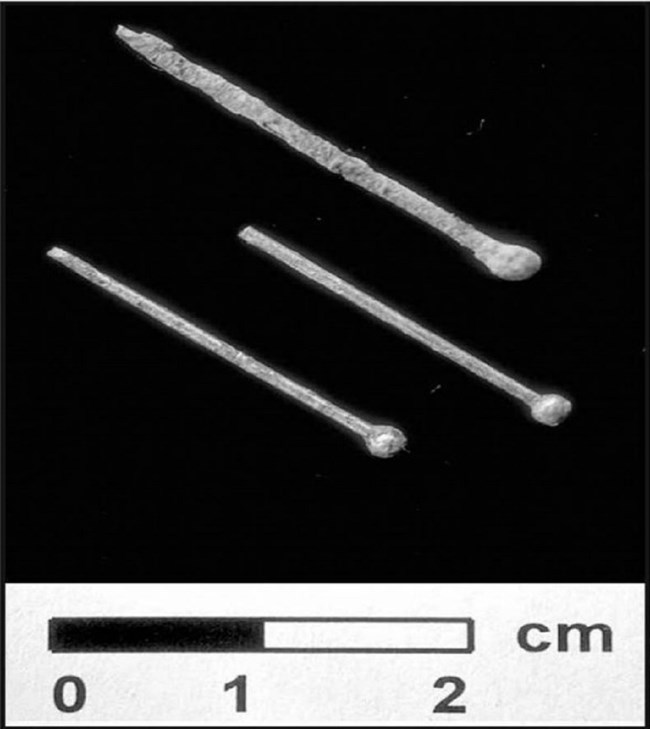|
Restricted from Christian churchyards within the city, Africans developed a burial ground consisting of a small plot of land located outside the city’s northern palisade. As the enslaved population grew, so did the Burial Ground, eventually covering five to six acres, or about five present-day city blocks. Even here, harsh legal restrictions applied. No more than twelve persons were permitted in funeral procession or at graveside services, and interment was not allowed at night, the customary time for many African burial rituals. Enslaved Africans were required to have a written pass in order to travel more than a mile away from home. 
Cheryl LaRoche 
Photo by Doville Nelson 
Photo by: Josh Nefsky Shroud pins were recovered from 159 different burials, and were the most common artifact recovered. Most pins were mineralized and fragmented, although one intact pin measured 2.5cm. the presence of pins implies the presence of shrouds, although not much cloth survived.
Archeology Reports
The Archaeology of 290 BroadwayExcavation of the site of 290 Broadway took place in compliance with Section 106 of the Historic Preservation Act of 1966. The bulk of the African Burial Ground/290 Broadway site excavation was undertaken by Historic Conservation Inc. Later, John Milner Associates took over excavation, producing this 4-volume set of reports presenting their descriptions and interpretations of that excavated portion of 290 Broadway not directly related to the excavated human remains. The New York African Burial Ground: Unearthing the African Presence in Colonial New York
|
Last updated: September 10, 2024
